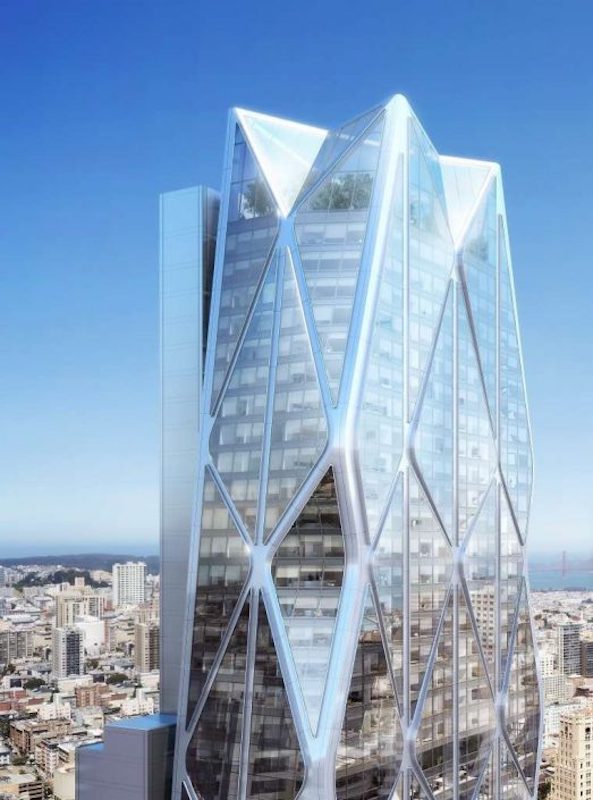The general contractor Swinerton has rolled out a new brand identity that reflects the businesses it has added or evolved into over the past several years.
The San Francisco-based company, which is celebrating its 130th anniversary this year, is probably best known as Swinerton Builders, a brand it started using in 2001. But over the past six or seven years, the company has diversified in different directions.
In 2008, it launched Swinerton Renewable Energy, which has grown to become the largest builder of solar power plants in the U.S., with $1.5 billion in revenue last year, and the third-largest in the world.
Swinerton Renewable Energy has served the company as a platform for international growth. Over the past four years, it has built nine solar power plants in Canada, and a 750-MW solar power plant in Mexico.
Within its renewable energy unit, which is based in San Diego, Swinerton launched SOLV in 2012, a division focused on operating and maintaining solar utility plants. SOLV is now the largest company of its kind, managing more than 6 MW of power, and with 150 employees dedicated to that business. Last year, GTM Research and SOLICHAMBA identified SOLV the top service provider in the global operations and maintenance market for the second consecutive year.

Swinerton's new logo shows an architect and contractor pointing “outside the box,” which emphasizes the company's expanding into new businesses and markets. Image: Swinerton
Seeking better profit on work
Swinerton isn’t walking away from general contracting work; far from it. “We’re still a commercial GC at heart,” says Jeff Hoopes, a 34-year company vet who has been its CEO and Chairman since 2013. Under his leadership, Swinerton has expanded its reach beyond the western states by opening offices in Atlanta five years ago, Raleigh two years ago, and Charlotte last fall.
One of Swinerton’s larger current projects is Oceanwide Center, which it’s building in joint venture with the GC Webcor. When completed in 2021, Oceanwide’s two towers in San Francisco Transit Center district will include 265 residential units, a five-story-tall 26,000-sf public square, and a 169-key Waldorf Astoria hotel.
But it’s tough making money as a contractor, Hoopes laments. The industry averages only about 1% of a project’s revenue for contracting fees. “We’re looking at five times that” from the new businesses that Swinerton has moved into, Hoopes says.
So the company has been pulling away from government contracting projects, primarily because Congress has been inconsistent about funding them properly. Conversely, Swinerton is doing more co-investing with developer clients on projects like a 300-unit housing complex in Houston it recently worked on.
Hoopes says his company has also been transitioning into more self-perform work. It has 850 employees in California alone who do drywall. Swinerton designs and builds parking structures. And it wants to get into concrete pouring, and to either start up or purchase an electrical contractor. “We want to control more of every job,” says Hoopes.
Swinerton currently has around 2,000 “craft” workers in the field, along with 1,950 salaried employees, and 500-1,000 who work in the renewable energy business. When asked if, like many other GCs, his company has had trouble finding workers, Hoopes says that trades “want to work for a GC … because we’re employee owned, have good benefits, and offer career opportunities.”
Swinerton is 50% employee owned and 50% management owned. Its status as an ESOP is one of the reasons why Hoopes says he’s more concerned about growing Swinerton’s bottom line than he is about increasing its revenue, which nonetheless hit $4 billion last year and is projected to increase to $4.5 billion in 2018.

Swinerton is still committed to commercial building. One of its major projects is Oceanwide Center in San Francisco. Image: Swinerton
Still exploring new territories
To that end, Swinerton, with 15 offices and 11 practices, is looking at opening offices in New York and Chicago. It is also getting into the business of turning animal waste into energy. In July its plant on 42 acres in Warsaw, N.C., will be fully funded. That plant—which Swinerton owns in partnership with Carbon Cycle Energy—is set up to convert 4,200 tons of solid and liquid biodegradable materials per day to 6,500 dekatherms of biomethane gas. At full capacity, this plant will generate more than 1 billion cubic meters of pipeline-quality gas over the length of its 15-year contract with Duke Energy. That would be enough to power 32,000 houses.
Swinerton also has waste conversion plants in Phoenix and Missouri.
As part of its rebranding, Swinerton has made changes at its philanthropic arm, The Swinerton Foundation, which it started in 2002. The Foundation is transitioning from a private to a public nonprofit organization, and its new focus areas are equitable education, resilient communities, and workplace development.
Related Stories
| Aug 11, 2010
Reed Construction Data files corporate espionage lawsuit against McGraw-Hill Construction Dodge
Reed Construction Data (RCD), a leading construction information provider and a wholly-owned subsidiary of Reed Elsevier (NYSE:RUK, NYSE:ENL), today filed suit in federal court against McGraw-Hill Construction Dodge, a unit of The McGraw-Hill Companies, Inc. (NYSE:MHP). The suit charges that Dodge has unlawfully accessed confidential and trade secret information from RCD since 2002 by using a series of fake companies to pose as RCD customers.
| Aug 11, 2010
NAVFAC releases guidelines for sustainable reconstruction of Navy facilities
The guidelines provide specific guidance for installation commanders, assessment teams, estimators, programmers and building designers for identifying the sustainable opportunities, synergies, strategies, features and benefits for improving installations following a disaster instead of simply repairing or replacing them as they were prior to the disaster.
| Aug 11, 2010
Construction employment shrinks in 319 of the nation's 336 largest metro areas in July, continuing months-long slide
Construction workers in communities across the country continued to suffer extreme job losses this July according to a new analysis of metropolitan area employment data from the Bureau of Labor Statistics released today by the Associated General Contractors of America. That analysis found construction employment declined in 319 of the nation’s largest communities while only 11 areas saw increases and six saw no change in construction employment between July 2008 and July 2009.
| Aug 11, 2010
Green consultant guarantees LEED certification or your money back
With cities mandating LEED (Leadership in Energy and Environmental Design) certification for public, and even private, buildings in growing numbers, an Atlanta-based sustainability consulting firm is hoping to ease anxieties over meeting those goals with the industry’s first Green Guaranteed.
| Aug 11, 2010
Skanska, Turner most active in U.S. hotel construction, according to BD+C's Giants 300 report
A ranking of the Top 50 Hotel Contractors based on Building Design+Construction's 2009 Giants 300 survey. For more Giants 300 rankings, visit http://www.BDCnetwork.com/Giants







